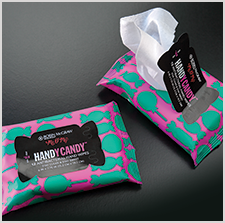Flexible Packaging Trends of 2017
May 1, 2017
Inland recently attended Flexible Packaging Association (FPA)’s 2017 Annual Meeting where the key flexible packaging trends of 2017 were discussed. FPA is an association dedicated to connecting, advancing and leading the flexible packaging industry. As a manufacturing member of FPA, Inland is always interested in joining together with other industry representatives to discuss the latest trends in flexible packaging. Since FPA’s Annual Meeting brought about many of these relevant discussions, we thought we would share some of the flexible packaging trends that were covered and why they’re so important in 2017.
Uptick in flexible packaging adoption
As they do every year, FPA announced their annual Flexible Packaging Achievement Awards at this year’s Annual Meeting to showcase the industry’s innovations and packaging advances. What was unique about this year’s entries was an increase in flexible packaging trends for new-use and packaging transition. We’re beginning to see more and more of conventional packaging, such as corrugate, rigid plastics, glass and metal, either being repurposed or reintroduced using flexible packaging formats. An example of this is Hunt’s Recipe Ready Tomato Paste Pouch, which won FPA’s Highest Achievement award. The pouch extends the use of flexible packaging into a new division of food and offers unique shelf-appeal by replacing the classic 16 ounce metal can. The pre-measured sized pouch also aids in consumer convenience. Other examples of awards that showcased packaging transition included stand-up pouches and overwrap flexible packaging options for food, household, personal care, health care and pet food products. It’s evident that now, more than ever before, that flexible packaging is increasingly competing against traditional packaging formats to provide consumers with best-use experiences in a variety of markets.
Sustainability and end-of-life strategies
According to FPA, the total volume of non-recyclable flexible packaging waste is about 1.5% of the total U.S. annual municipal waste. At the Annual Meeting it was apparent that flexible packaging suppliers and manufacturers in the industry are committed to bringing that number to zero, sooner rather than later. Many collaborative efforts and advocacy programs were discussed on how major players in the industry are tackling a variety of end-of-life sustainability measures for flexible packaging, including decomposition rates, recyclability rates, and material reduction and composition. There was also a lot of great information shared about what has been accomplished with the increased adoption rate of flexible packaging. When compared to traditional packaging formats, flexible packaging has helped with the reduction of food waste, carbon footprint and shipping damages – along with others. As consumers continue to advocate for recyclable packaging, we see this continuing to be a major collaborative effort and one of the flexible packaging trends amongst brand owners, retailers and the packaging industry throughout 2017 and beyond.
Opportunities lie ahead
As no major surprise to those in attendance, the final flexible packaging trend from this year’s Annual Meeting was the many opportunities that lie ahead for those in the industry. With a steady growth rate anticipated on the horizon, flexible packaging holds a promising future – with the biggest growth opportunities coming from new segments, such as pet and home care. Food continues to be the leading user of flexible packaging, but even it shows promising growth – particularly in the baby, processed fruits and vegetables, and snack markets. As consumers continue to buy portability, portal control, convenience and freshness, we anticipate flexible packaging to be leading the way.
While we support many label and packaging types here at Inland, we’re excited for what 2017 holds for our flexible packaging division and product innovations. To learn more about flexible packaging trends and the FPA visit: www.flexpack.org.



